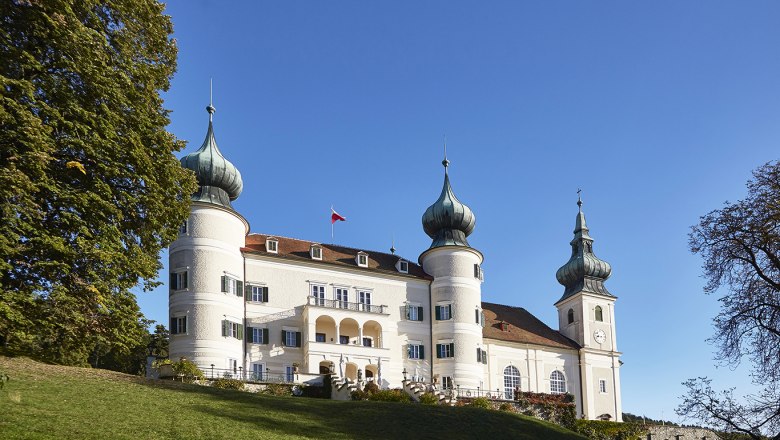Artstetten Castle
Imperial family’s residence and final resting place – a visit to the home of Archduke Franz Ferdinand.
Just north of the Wachau, you will find a fairytale castle with a true and grand story to tell. The Archduke Franz Ferdinand Museum at Artstetten Castle (German: Schloss Artstetten) is a magnet for visitors interested in Austrian cultural history no matter what country they are from. Here you encounter a living memorial to one of the most colorful figures in the latter days of the Danube Monarchy.
An endless tale
The first documented mention of Artstetten dates from the mid-13th c. Soon after that, the medieval fortress was converted to a castle, which subsequently changed hands quite frequently. In 1823 Emperor Franz I took over the estate. His brother Archduke Carl Ludwig renovated the castle inside and out in grand style from 1861 onward and then passed it on in 1889 to his oldest son Franz Ferdinand, Archduke of Austria-Este. He too modified the castle to his own liking. Artstetten became a beloved family residence for him, his wife Sophie of Hohenberg and their children – until 1914 when the couple was assassinated in Sarajevo. Artstetten has had its present appearance since 1913: an architecturally charming castle flanked with seven characteristic towers. Its current owners, the Hohenberg family, have kept history alive here.
The Emperor’s new plans
The two features that most powerfully evoke memories of Archduke Franz Ferdinand are the English landscape garden and the family crypt he ordered built in 1909. The pool next to the bathing pavilion had been installed before that by Archduke Carl Ludwig, who was an avid swimmer. He also added the chestnut-lined allée laid out according to geomantic principles and the two fountains. Imperial joie de vivre fills the air.
New takes on old tales
A visit to the museum shows you the fine line between happiness and suffering, life and death. It opens up the multifaceted world of the political thinker, reformer, collector – but above all family man Archduke Franz Ferdinand. For little princes and princesses who visit, the mascot of Artstetten, Prince Teddy, has come up with a special children’s tour. The Baroque church that was connected to the castle in 1691 is largely furnished with objects collected by the heir presumptive to the throne. The centenary year 2018 saw the reopening of the permanent exhibition, newly designed as part of the EU project NETWORLD: “Through the keyhole: History speaks! Archduke Franz Ferdinand and World War I.” It tells this complex chapter of history in a way that helps you really understand it.
Historical floral tribute
Little is known about the early years of the castle park. Documentation did not become more detailed until Artstetten was taken over by the “Flower Emperor” Franz I in 1823. This castle park ranks today as one of Austria’s most significant historical parks and is listed in the table of 56 top parks and gardens in the Austrian Monument Protection Act. A stroll through the park followed by a delicious break in the castle café in the historical salons or on the sun terrace puts the crowning touch on every visit to Artstetten Castle!








